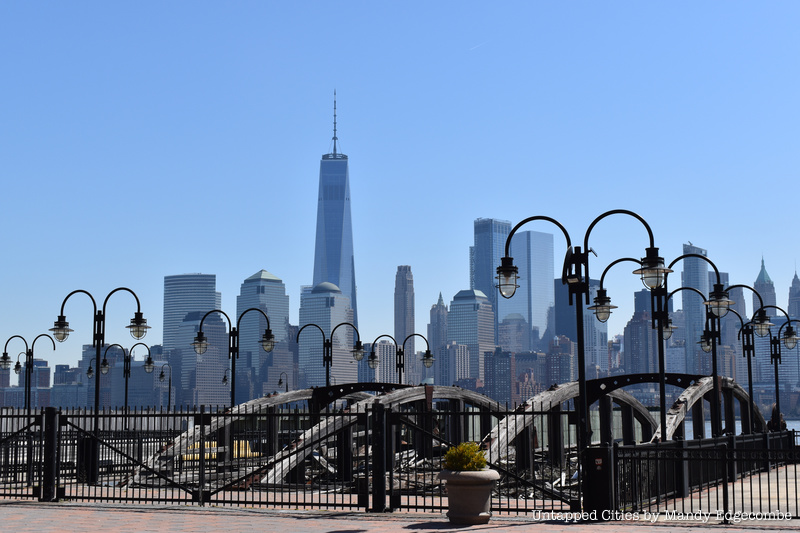
Visited by over four million people a year and housing two restaurants, a historic railroad terminal, and a marina, Liberty State Park is not only a newer American landmark and world-class destination but also one of the best examples of urban environmental restoration in the country. It was created by reclaiming land once used for the Railroad industry and was one of the busiest transportation hubs in the country during its peak years (as well as the closest you can get to the Statue of Liberty without going to Liberty Island).
Now serving as a habitat for the protection of wildlife, it consists of over 1200 acres of land, water, and shoreline, providing an urban oasis in Jersey City and New York harbor. The Central Railroad of New Jersey created most of the land for the Park by filling in Communipaw Cove, which is the native name of the area. Up until the 19th century, the land that is now Liberty State Park was mostly water and teeming with life, including oyster beds and native Lenape encampments before colonial contact.

The Dutch West India Company ultimately brought Dutch farms or “Bouweries” along the shoreline and inland in the form of land patents, giving their higher-ranking employees the opportunity to promote the creation of villages, though few were successful. By the 1640s, Communipaw Cove stretched from the Morris Canal to the North and to Caven Point to the South. The shoreline went as far back as where the New Jersey Turnpike is today behind the Park, near Liberty Science Center.
The railroad eventually filled in these salt marshes and tidal mudflats with oceangoing vessel ballast, Jersey City construction debris, and approximately 200 million cubic yards of historic debris (trash to be clear, but it’s old and deeply buried beneath the soil) between 1860 and 1928, creating the land used by park goers today. The Park lies directly behind the Statue of Liberty and is managed by the state of New Jersey’s Department of Environmental Protection Division of Parks and Forestry.
While it officially opened in 1976, portions of the park were being still restored into the 2000s, and a major revitalization plan is currently in the works, set to be announced by the DEP in May 2023. An ongoing effort is taking place to protect the park, created by the sacrifice and hard work of a few dedicated individuals, such as Morris Pesin and Audrey Zapp. It has been continually cared for by hundreds of state park employees since its official creation during America’s centennial year on Flag Day, June 14th, 1976. Today, we’re taking a look back at its history and many interesting secrets:
1. There’s an Abandoned Rail Station at Liberty State Park
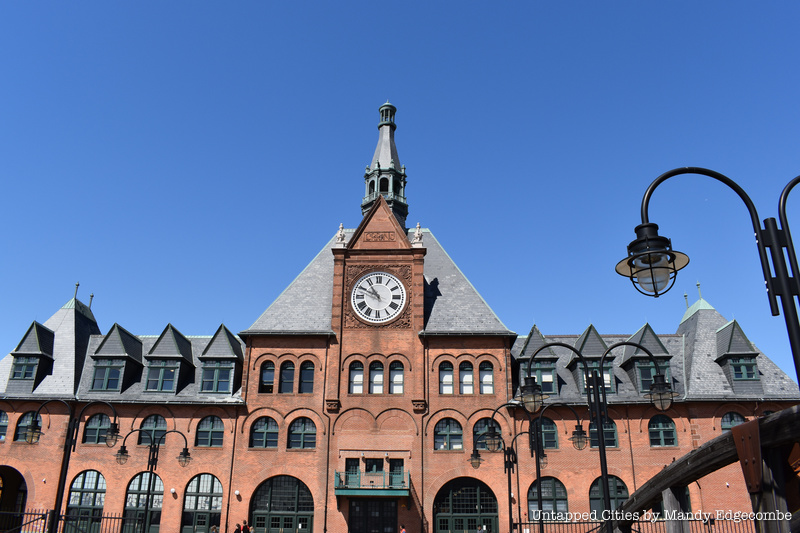
Liberty State Park was once the location of the terminus of the Lehigh Valley, Central Railroad of New Jersey, and Baltimore and Ohio Railroads from 1889 to 1967. After arriving in Jersey City, visitors had to ferry on to Lower Manhattan as there were no tunnels under the Hudson River until 1910 when the North River tunnel was built much further north for train service from Weehawken, New Jersey to Manhattan’s Penn Station.
The CRRNJ Terminal building is one of the grandest of its kind and recently received its best restoration ever after it suffered damage due to Superstorm Sandy. Built in 1889 and designed by the architects Peabody & Stern in a French renaissance style, it served as the main passenger terminal for the Central Railroad of New Jersey for over 80 years. It is considered a part of the “Historic Trilogy,” which also includes the Statue of Liberty and Ellis Island. Immigrants would arrive by steamship and pass the Statue, be processed at Ellis Island, and then two thirds of them would come to this train terminal building for further destinations in the U.S. to begin their new lives. There was even a separate immigrant waiting room for new arrivals on their way to all points west. This terminal is actually the second one built at this location; the first was a smaller wooden structure, built in 1864.
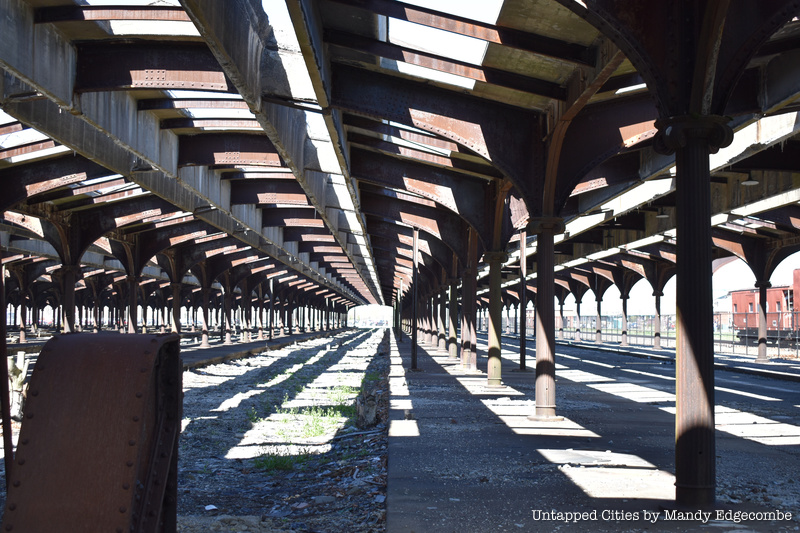
When approaching the terminal building by car, the first thing you see is the Abraham Lincoln Bush-designed train shed behind the terminal. You can take great photos but the area is too hazardous to enter due to its bad state of decay. It was built in 1913 during a major expansion of the terminal with its primary function to keep people protected from weather as they stepped on and off the trains. The large concourse connecting it with the terminal was also constructed at this time.
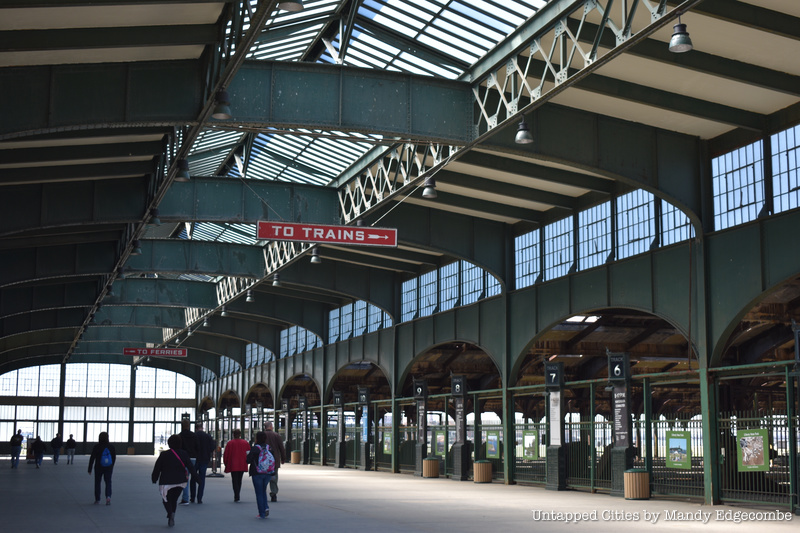
The largest of its kind, it contained 20 tracks that can cover the equivalent of four football fields and large ferry sheds in front for service to Manhattan. At its peak, 65,000 people a day passed through here riding on over 350 trains. Train sheds of this type are most commonly found on the west coast. The New Jersey Department of Environmental Protection, the governing agency who operates Liberty State Park, is currently reviewing the train shed to be able to protect it further historically, or perhaps demolish it. There is no definitive answer at this time.
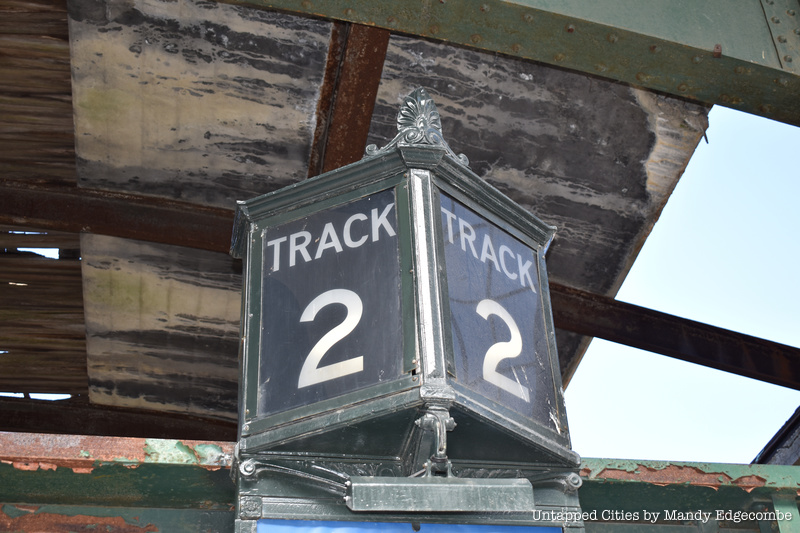
In addition, many luxury trains would leave and arrive from this terminal, including the famous Jersey City to Atlantic City train, the Blue Comet, operating from 1929 to 1941 (think the era of Boardwalk Empire). The Blue Comet historical society donated the new, yet antique train destination signs you’ll see by the tracks from the terminals heyday, when the highest number of trains operated here from 1938 to 1941. CRRNJ declared bankruptcy in 1967 and closed the terminal. It was purchased with state and federal funds in 1968. Look closely around the clock on the front of the building, it says the words Industry, Science, Agriculture, and Commerce!
Different types of history tours of the Terminal are offered throughout all seasons with more programming in the summer. See the interpretive center schedule for more details. The programs often require pre-registration, but park docents are there to answer any questions and share their knowledge!





